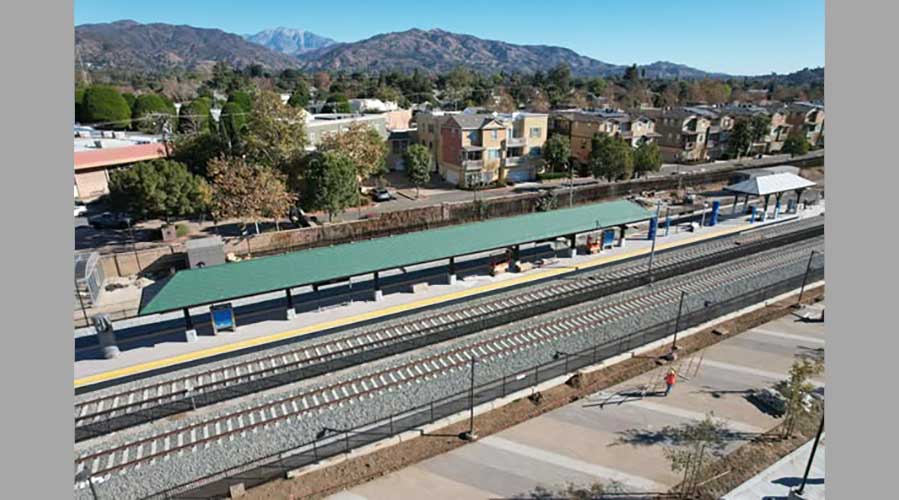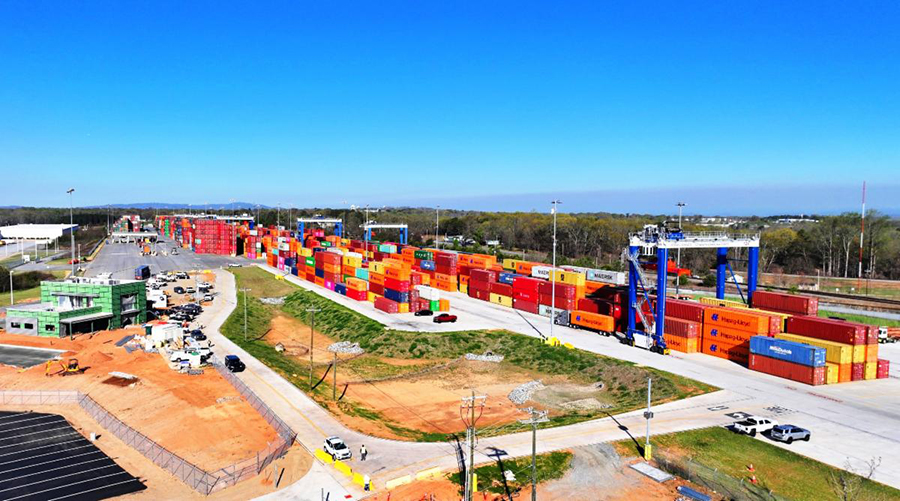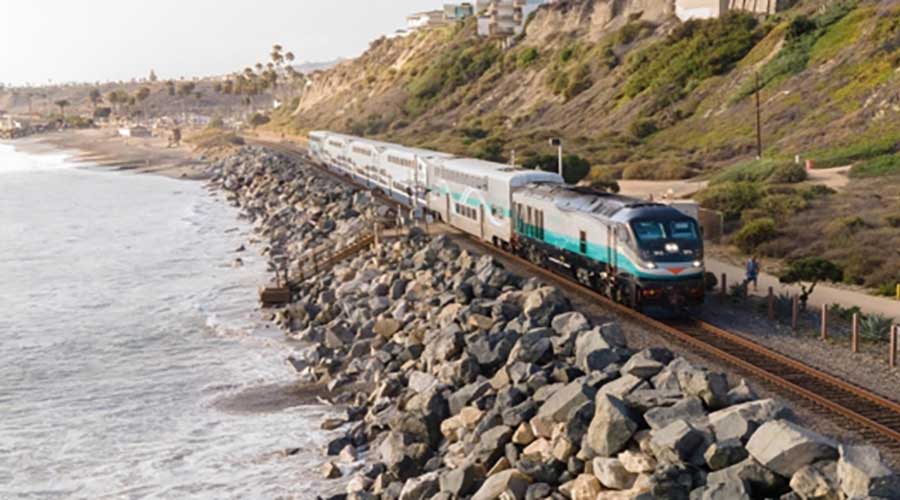Newsletter Sign Up
Stay updated on news, articles and information for the rail industry
Stay updated on news, articles and information for the rail industry
 railPrime
railPrime
Rail News Home
Rail Industry Trends
Rail News: Rail Industry Trends
The eight-year battle between the Dakota, Minnesota & Eastern Railroad Corp. (DM&E) and Mayo Clinic/city of Rochester, Minn., over the railroad’s proposed Powder River Basin (PRB) project heated up yesterday.
The clinic and Rochester Coalition announced they sent a letter to the Federal Railroad Administration (FRA) urging the agency to deny the DM&E’s application for a $2.5 billion Railroad Rehabilitation and Infrastructure Financing (RRIF) loan to help fund the project, which calls for upgrading a line that runs past the Mayo Clinic.
Mayo officials also sent a report to the FRA claiming the DM&E has one of the worst safety records among U.S. railroads. The regional is one of two U.S. roads required to meet conditions of a safety compliance agreement imposed by the FRA. The administration determined the railroad had problems with track maintenance, employee training, bridge inspections and grade crossing warning systems, the clinic’s report states.
During the past 10 years, the DM&E has had 107 train accidents involving hazardous materials, including one in Balaton, Minn., in July 2004, when derailed cars spilled about 15,000 gallons of materials, according to the report.
“We have a medical and moral obligation to protect and defend the health and safety of our patients and staff,” said Mayo Clinic Chief Executive Officer Dr. Glenn Forbes in a prepared statement. “Federal safety records reveal the DM&E is a habitually unsafe railroad and permitting this project to go forward would only make it more dangerous for Mayo patients, our community and those along the entire line.”
The railroad does not have one of the nation’s worst safety records and has spent hundreds of millions of dollars the past few years to upgrade infrastructure and prevent accidents, said DM&E President and CEO Kevin Schieffer during a press conference held yesterday in Sioux Falls, S.D. Between 2004 and 2006, the railroad’s traffic increased 11 percent but number of train accidents decreased 52 percent. And the FRA has imposed safety compliance agreements on many other railroads, including CSX Transportation and Union Pacific Railroad, said Schieffer.
The safety argument also doesn’t hold water because the PRB project calls for upgrading the 80-year-old line near the clinic — which has jointed rail and 60 defects per mile — into a modern continuous-welded line that would reduce the risk of derailments and haz-mat releases, said Schieffer. The DM&E plans to build a 262.3-mile line through western South Dakota and eastern Wyoming, and upgrade 600 miles of other lines in South Dakota and Minnesota to access the PRB.
“Our project won’t affect the clinic’s ability to provide quality health care,” he said. “Their No. 1 concern is competing with John Hopkins [Hospital].”
The clinic has opposed the project for years and has deep enough pockets as a $7 billion non-profit entity to keep fighting even though the U.S. Eighth Circuit Court of Appeals and Surface Transportation Board have rejected Mayo’s previous arguments, said Schieffer. So far, 55 of the 56 major communities along the proposed coal-hauling lines have reached agreements with the DM&E supporting the project. Only Rochester and the clinic oppose the project.
“We’re at the point where it’s enough already. The clinic says something and then we respond,” said Schieffer. “We welcome the opportunity for an open debate on the issues.”
The Rochester Coalition raised one. Comprising the clinic, city of Rochester, Olmsted County and Rochester Area Chamber of Commerce, the coalition submitted a study to the FRA that questions the DM&E's ability to repay the $2.5 billion RRIF loan.
The railroad can repay the loan — and not cost taxpayers a dime — as long it can give potential customers a firm timeline as to when the DM&E will begin delivering coal, said Schieffer.
“This project could be funded by the private sector, but we need a definite timeframe and more certainty,” he said. “The Mayo’s tactic is to drag us down, and wait until we run out of money, patience and spirit. But that won’t happen.”
— Jeff Stagl
7/21/2006
Rail News: Rail Industry Trends
DM&E's PRB project threatens safety, Mayo Clinic and Rochester Coalition claim; upgraded track will help prevent train accidents, railroad says
advertisement
The eight-year battle between the Dakota, Minnesota & Eastern Railroad Corp. (DM&E) and Mayo Clinic/city of Rochester, Minn., over the railroad’s proposed Powder River Basin (PRB) project heated up yesterday.
The clinic and Rochester Coalition announced they sent a letter to the Federal Railroad Administration (FRA) urging the agency to deny the DM&E’s application for a $2.5 billion Railroad Rehabilitation and Infrastructure Financing (RRIF) loan to help fund the project, which calls for upgrading a line that runs past the Mayo Clinic.
Mayo officials also sent a report to the FRA claiming the DM&E has one of the worst safety records among U.S. railroads. The regional is one of two U.S. roads required to meet conditions of a safety compliance agreement imposed by the FRA. The administration determined the railroad had problems with track maintenance, employee training, bridge inspections and grade crossing warning systems, the clinic’s report states.
During the past 10 years, the DM&E has had 107 train accidents involving hazardous materials, including one in Balaton, Minn., in July 2004, when derailed cars spilled about 15,000 gallons of materials, according to the report.
“We have a medical and moral obligation to protect and defend the health and safety of our patients and staff,” said Mayo Clinic Chief Executive Officer Dr. Glenn Forbes in a prepared statement. “Federal safety records reveal the DM&E is a habitually unsafe railroad and permitting this project to go forward would only make it more dangerous for Mayo patients, our community and those along the entire line.”
The railroad does not have one of the nation’s worst safety records and has spent hundreds of millions of dollars the past few years to upgrade infrastructure and prevent accidents, said DM&E President and CEO Kevin Schieffer during a press conference held yesterday in Sioux Falls, S.D. Between 2004 and 2006, the railroad’s traffic increased 11 percent but number of train accidents decreased 52 percent. And the FRA has imposed safety compliance agreements on many other railroads, including CSX Transportation and Union Pacific Railroad, said Schieffer.
The safety argument also doesn’t hold water because the PRB project calls for upgrading the 80-year-old line near the clinic — which has jointed rail and 60 defects per mile — into a modern continuous-welded line that would reduce the risk of derailments and haz-mat releases, said Schieffer. The DM&E plans to build a 262.3-mile line through western South Dakota and eastern Wyoming, and upgrade 600 miles of other lines in South Dakota and Minnesota to access the PRB.
“Our project won’t affect the clinic’s ability to provide quality health care,” he said. “Their No. 1 concern is competing with John Hopkins [Hospital].”
The clinic has opposed the project for years and has deep enough pockets as a $7 billion non-profit entity to keep fighting even though the U.S. Eighth Circuit Court of Appeals and Surface Transportation Board have rejected Mayo’s previous arguments, said Schieffer. So far, 55 of the 56 major communities along the proposed coal-hauling lines have reached agreements with the DM&E supporting the project. Only Rochester and the clinic oppose the project.
“We’re at the point where it’s enough already. The clinic says something and then we respond,” said Schieffer. “We welcome the opportunity for an open debate on the issues.”
The Rochester Coalition raised one. Comprising the clinic, city of Rochester, Olmsted County and Rochester Area Chamber of Commerce, the coalition submitted a study to the FRA that questions the DM&E's ability to repay the $2.5 billion RRIF loan.
The railroad can repay the loan — and not cost taxpayers a dime — as long it can give potential customers a firm timeline as to when the DM&E will begin delivering coal, said Schieffer.
“This project could be funded by the private sector, but we need a definite timeframe and more certainty,” he said. “The Mayo’s tactic is to drag us down, and wait until we run out of money, patience and spirit. But that won’t happen.”
— Jeff Stagl


 LRW Honors Amtrak’s Acheson As Railway Woman Of The Year
LRW Honors Amtrak’s Acheson As Railway Woman Of The Year
 From Editor-In-Chief Foran: Of Gender Equity And Inclusion
From Editor-In-Chief Foran: Of Gender Equity And Inclusion
 Spotlight On Some Of Today’s Rail Safety Products
Spotlight On Some Of Today’s Rail Safety Products
 Women of Influence in Rail eBook
Women of Influence in Rail eBook








